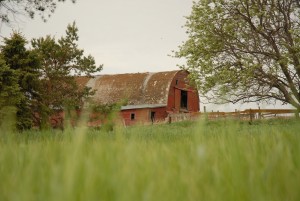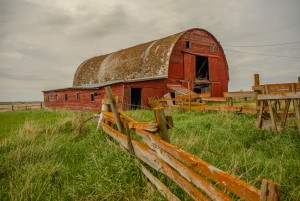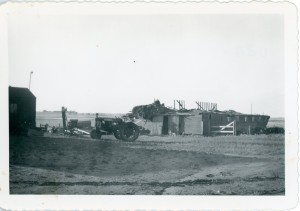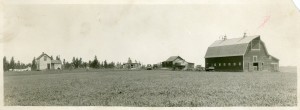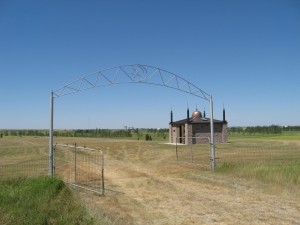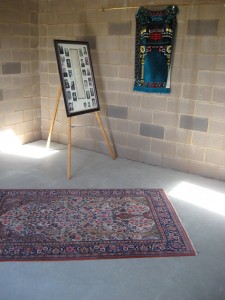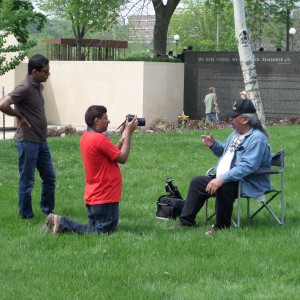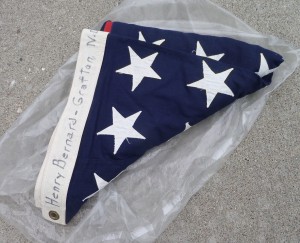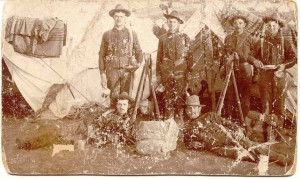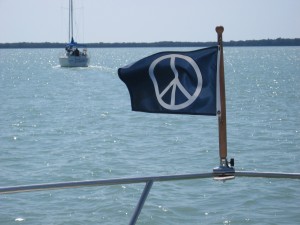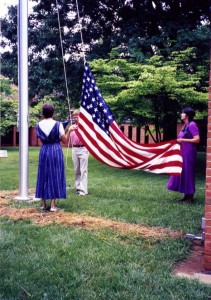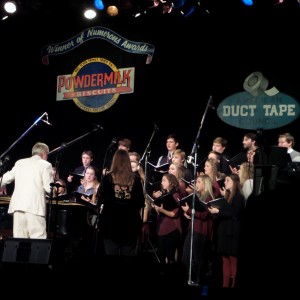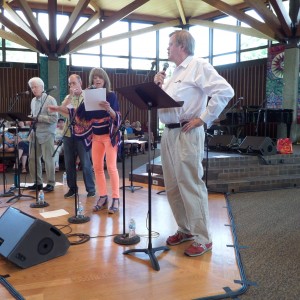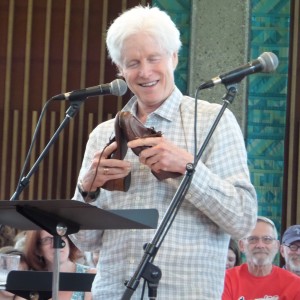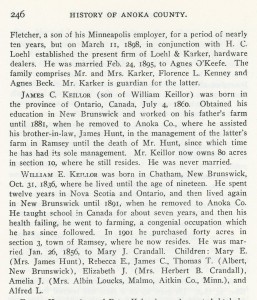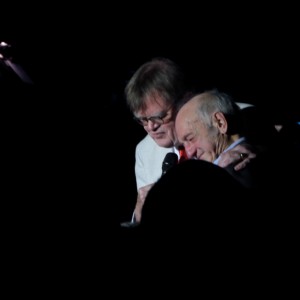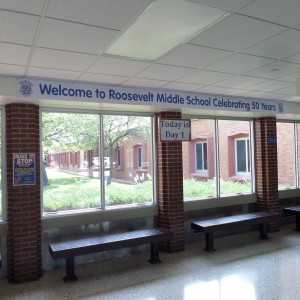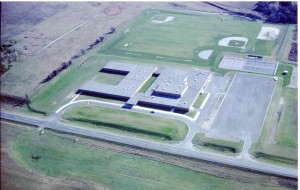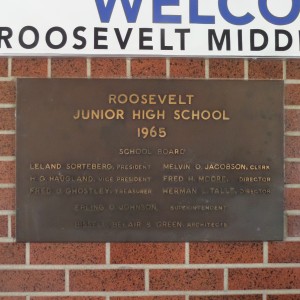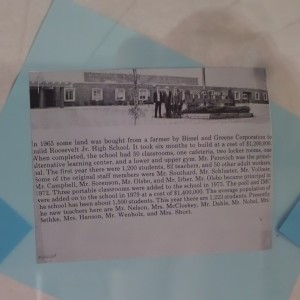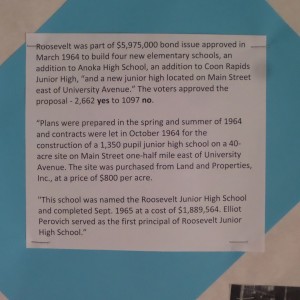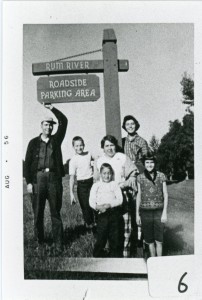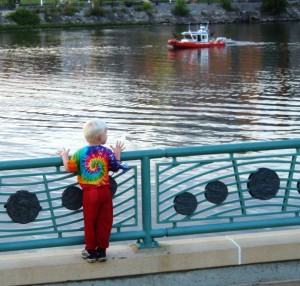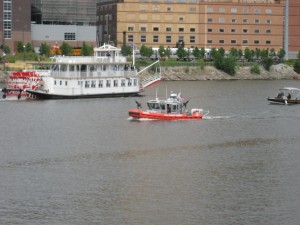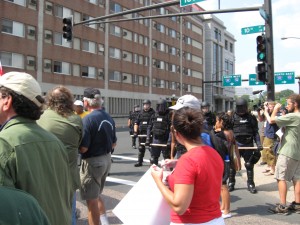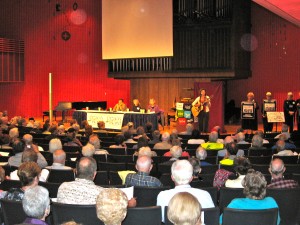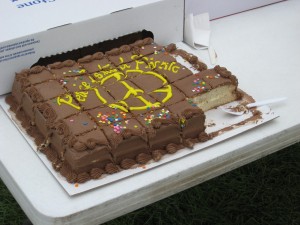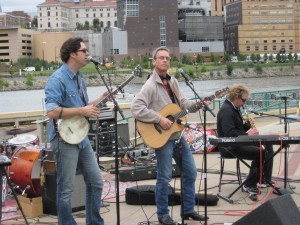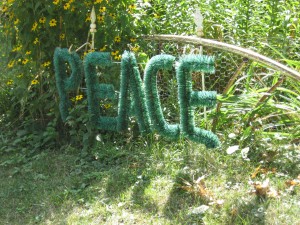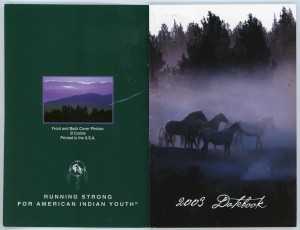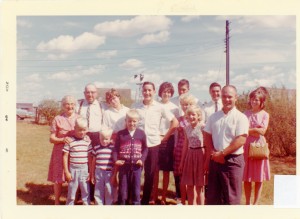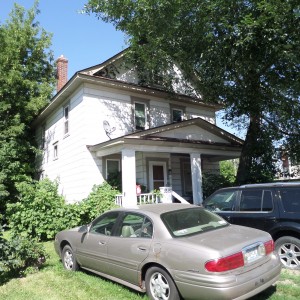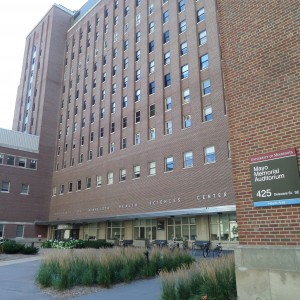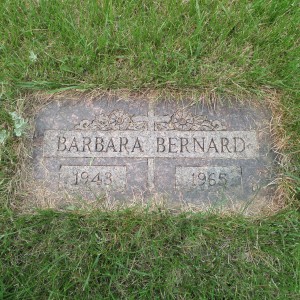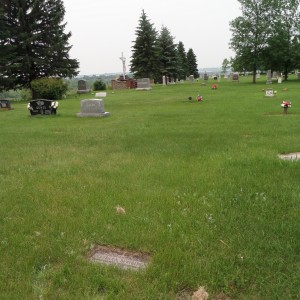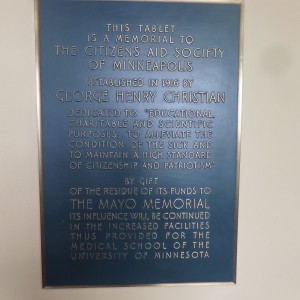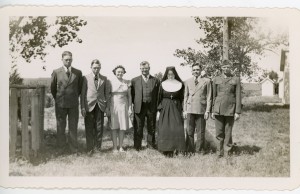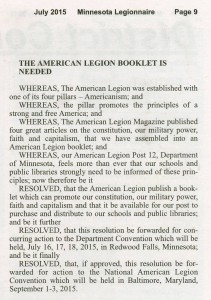#1091 – Jerome Meyer* and Dick Bernard: At Christmas Season 2015. The Old Red Barn; and The Cottonwood Tree
As 2015 ends, all best wishes for peace and kindness embracing everyone, everywhere. As sung so movingly at Pope Francis’ visit to the Twin Towers Memorial in NYC some months ago, “Let there be peace on earth, and let it begin with me.”
Here are two stories to help bring perspective as 2015 comes towards an end.
Pictured, the old Ferd and Rosa Busch barn between Berlin and Grand Rapids ND, built about 1915; unused since 1997. (Photos by Tom Maloney on May 24, 2015.) The Cottonwood tree (link at the end of this post) remains, about a half mile east of the old barn.
(click on any photo to enlarge it)
Psst! Hey you. Yeah, I mean you.
It’s me speaking. The old red barn. I’m guessing very few of you have ever seen me because I’m tucked away on an old abandoned farm acreage near a seldom used township road a few miles from the main hiway and somewhat hidden by a large grove of trees.
So, why am I talking to you?
Well, I just heard from a reliable source that I will be torn down, smashed and buried in a big hole and finally covered up by the Mother Earth I was built on. I’m sure my demise will not show up in the death notice column in the local paper; and there probably won’t be an obituary.
So before I’m no longer around I would like to say a few things to you.
I probably have had three or four farm owners in my life time. And sad to say the current owner no longer has any use for me, I’m so obsolete. I knew my time on Earth was getting short, as so many of my barn friends have disappeared from the local landscape.
For most of my life I could see up to 10 barns over the horizon. Now I can only see one across the barren field and that one has it’s days numbered too. I’ m sure my current owner needs a little more land for a larger farm profit.
I probably was built in the late 1930’s. I’m too old now to remember the exact year. This makes me well into my 90’s.
I’ve seen many good productive farm years and a few bad ones and years when the owners struggled just to exist and make bank payments. Some how we all survived. I’ve felt summer temperatures of more than 100 degrees and winter temperatures of 20 degrees below zero with very strong winds.
I’m still standing. Very few metal nails were used when I was built from local timber because most of my wood frame was held together by wooden pegs.
Boy, was I a beautiful sight when I was built. I thought I was a castle. For awhile I was the best looking barn in the township with a bright coat of red paint, white trim, a shiny roof, four tall lightning rods, and a big weather vane on top of a large dome shaped cupola.
I had new pulleys and a long trolley under the roof to hoist the bales up in the hay loft from the wagons.
In the early days, similar to all my fellow barns, I was the farm building with the most activity. I was used seven days a week 365 days per year. I provided shelter and a home for 12 cows that were milked twice per day. The mornings were started early as the farmer milked at 5 am in the morning, then came back at 5 pm for the evening milking.
There were always a few calves in the pens, sometimes a few pigs, and in the early days, four work horses that were used for field work before modern tractors took over.
There were always about a dozen cats that called me home. They couldn’t wait until the milking started because they always got a good supply of fresh, warm milk. I also had a large storage area in the hayloft where bales were stored for the milk cows to eat and straw for their bedding.
I even got electricity sometime in the early 1940’s. Then, the old kerosene lanterns were only used when electricity went out during storms.
I still can hear the faint sounds of laughter of the children playing games and swinging on the ropes hanging from my wooden beams. Believe it or not, I even had a barn dance when one of the farmer’s daughters got married.
Sometimes people made fun of my name by asking “were you born in the barn?” if you left the door open in the house and the cold air came in. Or if your fly was down on your trousers, people would say “your barn door is down”.
What glorious memories I hold onto. I’m now old, tired and spent. My wood frame is bending, my foundation is crumbling, and I’m about to fall over. The cold North winter winds continue to shake my whole body.
However, I have no regrets, I have served my owners well, and I’m proud of it. I haven’t been used in the last 20 years. My roof now is battered and has a big hole in it, so I sometimes get wet inside when it rains and when the snow blows in.
My once bright red paint now is faded, most of my windows are broken, my wood frame is leaning, the lightning rods are broken off and my weather vane is rusted in one position.
The original farmyard light no longer is on electricity and has been disconnected for many years. The only light I have now is nature’s sun and an occasional bright moon.
I still have a few feathered friends visiting me and a couple of cats that seek shelter. I wonder where they will go when I am gone.
So, I guess this is the last time you will hear from me. The few area farmers I still have around me probably will give me only a quick glance and then go on with their daily work when the big rigs arrive to take me down, bury me and cover me up.
I can’t complain though, because I have had a good, productive life. Hopefully there will be a few people who will remember me. But that soon will pass as new generations farm. My only regret is I will have no marker where I will be buried, and no one will ever visit my grave site. But I guess that’s okay – I was just an old barn.
Summer corn fields will now hover over me, and winter ice and snow will cover me.
Well, I’ve got to go now because I see the sun is setting in the West, and the end of the day for me has come.
By Jerome Meyer of Albert Lea Minn.
Our generation was lucky to have lived and enjoyed these things.
It’s sad the next generations will not have these memories.
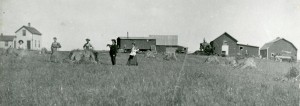
The original barn at right, circa 1907. This first barn was just to the north of the second barn.
Busch farm harvest time 1907. Rosa Busch holds her daughter Lucina, Others in photo include Ferd, behind the grain shock; Rosa’s sister, Lena, and Ferds father Wilhelm, and young brother William Busch. It is unknown who was unloading the grain in background. Possibly, it was Ferds brother, Leonard, who also farmed for a time in ND.
ABOUT ANOTHER FARM VETERAN: an essay I wrote about a Cottonwood tree on the same Busch farm, here.
* – The cast of characters for the stories, above:
Someone named Jerome Meyer apparently wrote the story about a barn near Albert Lea MN, which is above. As yet, I have been I unable to verify, or get permission from, the author, or know when the article was written, but his story, from my own childhood experience, rings so very true. It came to me as an e-mail, forwarded by a long-time good friend. My thanks, and if necessary, apology, to the real author of the Old Barn.
All blessings to everyone, everywhere.
COMMENT:
from Madeline, Dec. 12: While I was in Sweden, I learned why barns are traditionally red. Scandinavians brought the concept with them to the US: link here.
from Christina: I so enjoyed the piece about the old barn. It brought tears to my eyes. I forwarded it to my brothers and sisters and my kids. My youngest son bought my folks’ farmstead about two years ago. It’s a different house but still the same old barn. One of my brothers said he thought it would be OK to tear that barn down. I think he just wanted to tell us if we want to tear it down it would be OK. When I forwarded this piece I said I hoped [my son] would let the barn die and fall on its own. My Dad’s name is still written on the milk separator door. The barn has so many memories. Thank you for sending it. I copied the piece so I could keep it.
A Blessed Christmas to you and your family.
from Norm: Like all oldies, even the barn has added a few years: [from the post] “I probably was built in the late 1930’s. I’m too old now to remember the exact year. This makes me well into my 90’s.” We like hearing, “Wow! You don’t look a day over 75.” Wonderful piece Dick and makes me want to do something similar for some of the memories around.
from Larry: Having grown up on a farm, I, too,have have memories of our old barn. I was about 4 when our barn was brought across Bald Hill Creek (which ran through our farm) from somewhere south of us. Playing in the hay mow, milking cows since I was about 7, turning the cream separator before we got electricity in 1947 or ’48. Our old barn “died” when I was a grown man, and my mom had it buried. Now the old house is gone, too, so it is too difficult to visit my old home.
from Jerry: I enjoyed the story of the red barn. I have watched many barns end their life too, including one on the farm where I grew up. As a kid, some of those barns seem enormous and stately.
from Norm: A great observation from the old red barn!
We had two similar barns on our farm, one of which is still standing albeit eight feet lower than it was when originally built on an adjacent farm that my Dad bought many years ago. The thing was toppled by the wind before it could be anchored down on its new foundation and had to be jacked up, that is, primarily the roof, with new sides put in place and some roof damage repaired before it could be used again.
I am sure that it has lots of stories to tell as well and I will have to seek them out the next time I am at the farm that is now owned by one of my brothers and myself.
The other barn was knocked down and buried many years ago just as apparently is the fate of the red barn whose story you shared with us.
Ah yes, lots of good memories, Dick, of growing up on a modest farm (by Iowa or North Dakota standards) albeit with lots of hard work and toil often for very modest returns. On the other hand, we raised our own beef and chickens so we never starved and, of course, never thought that we were poor or whatever.
from Jane: Thanks, Dick. We have an old barn here on our farm, built into our hillside in 1901. Luckily it has had a metal roof for about the last 50 years, so it is doing pretty well. We saved it from pushing out and down the hill about 20 years ago. Our barn was built by Ole and Lena Waage, so we have Ole and Lena’s barn! We’d love to renovate it, if Santa leaves the where-with-all!

